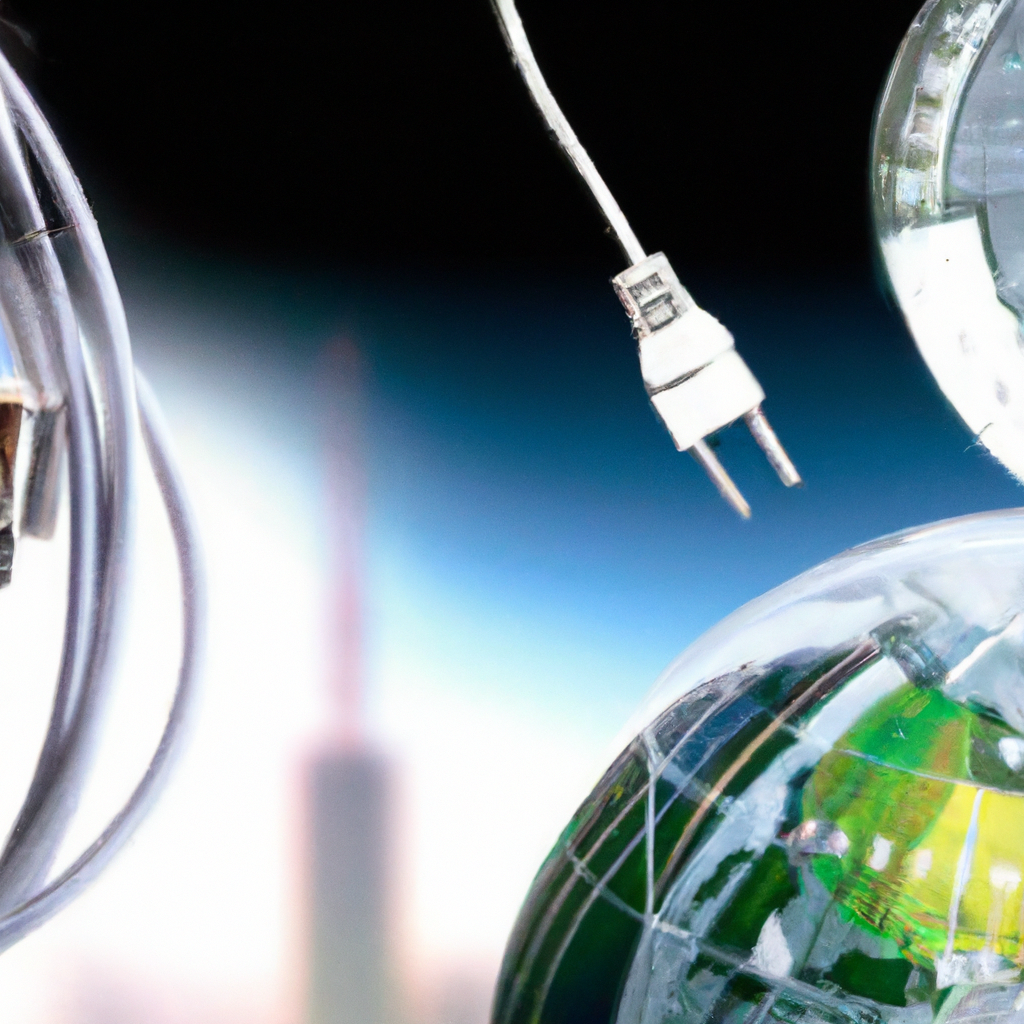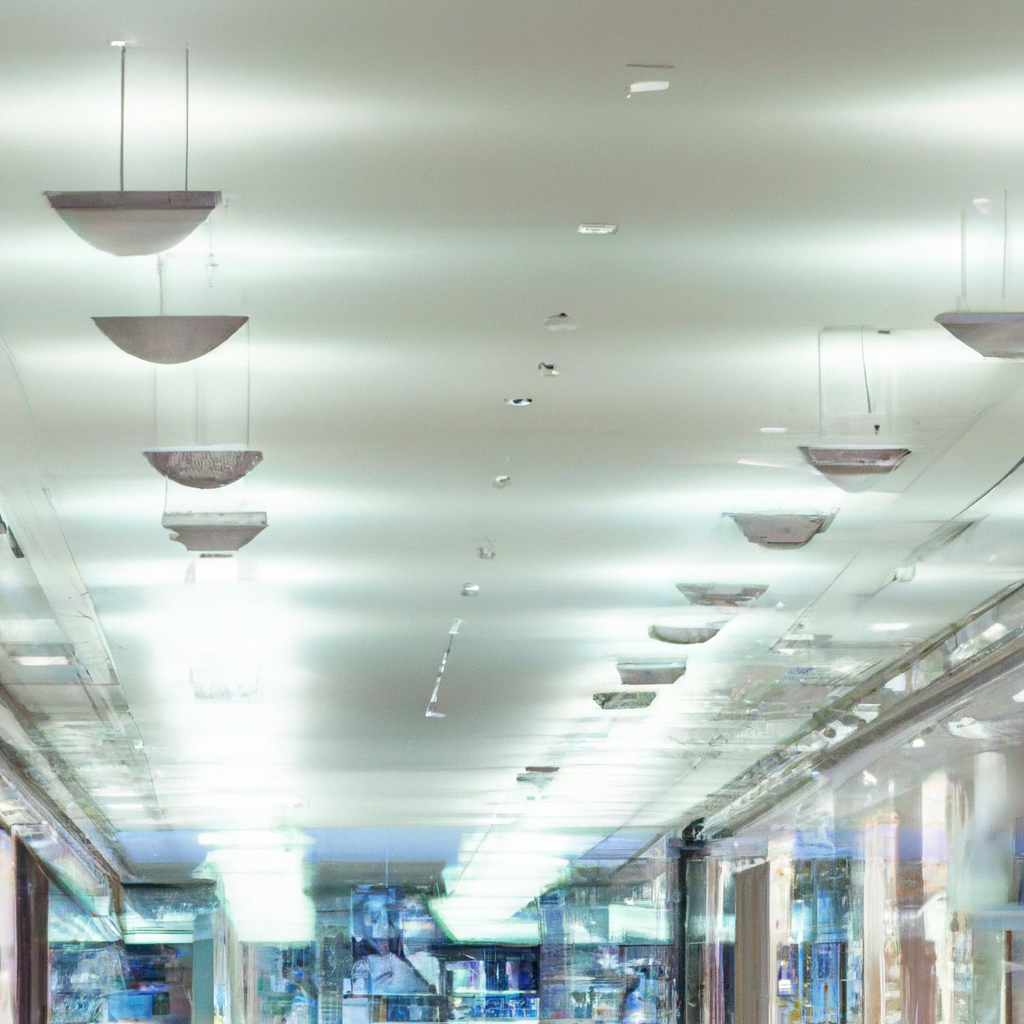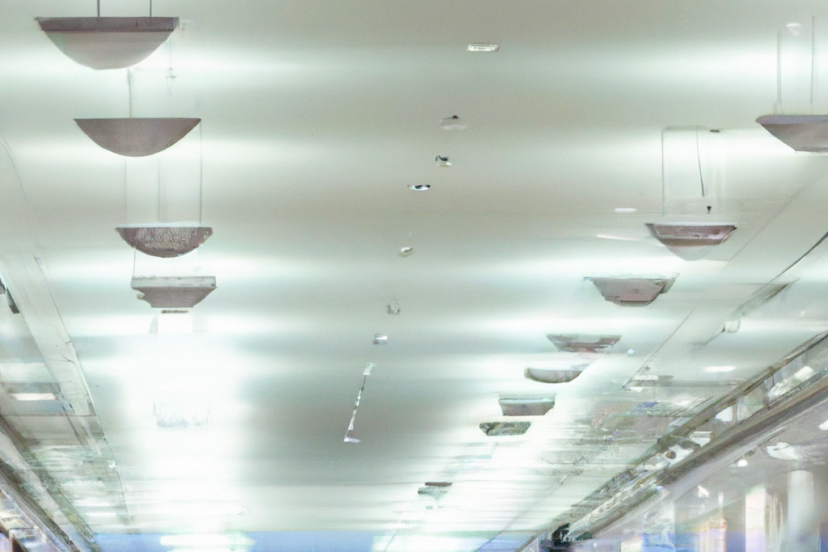Safety Tips And Considerations For Home Lighting Installations And Upgrades
If you’re looking to spruce up your home with some new lighting installations or upgrades, it’s important to keep safety at the forefront of your mind. Whether you’re adding a new pendant light in the kitchen or upgrading your outdoor lighting, there are a few key considerations to keep in mind to ensure a safe and successful project. From proper electrical wiring to selecting the right type of lighting, this article will provide you with valuable tips and advice to illuminate your home without compromising on safety.
Planning for Home Lighting Installation
Planning for home lighting installation is an essential step to ensure that you achieve the desired ambiance and functionality in each room of your house. By assessing the lighting needs for each room, considering the functionality of different lighting options, determining the appropriate lighting fixtures, and calculating the required wattage and lumens, you can create a well-lit and inviting space.
When assessing the lighting needs for each room, take into consideration the activities that will take place in that room. For example, a kitchen may require brighter task lighting for food preparation, while a living room may benefit from softer, ambient lighting for relaxation. By understanding the specific lighting requirements for each room, you can choose the most suitable lighting options.
Next, consider the functionality of different lighting options. There are various types of lighting to choose from, including ambient lighting, task lighting, and accent lighting. Ambient lighting provides overall illumination to a room and can be achieved through ceiling fixtures or wall-mounted lights. Task lighting focuses on specific areas where activities like reading or cooking take place. Accent lighting is used to highlight certain features or objects in a room. By combining these different types of lighting, you can create a dynamic and well-balanced lighting scheme.
After determining the lighting needs and functionality for each room, it’s time to choose the appropriate lighting fixtures. Consider factors such as the style and design of the fixtures, the size and layout of the room, and the desired effects you want to achieve. Whether you opt for chandeliers, pendant lights, recessed lighting, or wall sconces, make sure the fixtures complement the overall aesthetic of the room and provide the desired level of illumination.
Lastly, it is crucial to calculate the required wattage and lumens for your home lighting installation. Wattage refers to the amount of power consumed by a bulb, while lumens measure the brightness emitted by the light source. By calculating the wattage and lumens needed for each room, you can ensure that the lighting is sufficient without being too overpowering or dim. Consider factors such as room size, ceiling height, and the specific tasks or activities that will occur in each room.
Understanding Electrical Safety
When it comes to home lighting installation, electrical safety should never be overlooked. By following proper safety measures, you can prevent accidents, electrical shocks, and fires. Here are some essential steps to ensure electrical safety during the installation process.
First and foremost, always ensure that the circuit is turned off before starting any installation work. This will eliminate the risk of electric shock. Use a circuit breaker or switch to turn off the power to the specific area where you will be working. Once the power is off, double-check with a non-contact voltage tester to ensure that there is no electrical current flowing through the wires.
Before handling any wires, it is crucial to use a non-contact voltage tester. This handy tool allows you to detect the presence of electrical current without direct contact, reducing the risk of electric shock. Simply hold the tester near the wires or electrical outlets to ensure they are not live before proceeding with the installation.
Additionally, it is essential to check for potential electrical hazards in the area where you will be installing the lights. Look for frayed wires, exposed electrical connections, or damaged outlets. Fix any issues before proceeding to avoid potential electrical dangers. It’s also advisable to consult local building codes and regulations to ensure compliance and safety.

Choosing Safe Lighting Fixtures
Selecting safe lighting fixtures is crucial to maintain the safety of your home and prevent electrical hazards. When choosing lighting fixtures, there are several factors to consider to ensure their safety.
First and foremost, select fixtures that have proper safety certifications. Look for certifications from reputable organizations such as UL (Underwriters Laboratories) or ETL (Intertek). These certifications indicate that the fixtures have undergone rigorous testing and comply with safety standards.
Avoid fixtures with exposed wiring, as they pose a risk of electrical shock. Ensure that the wiring is properly concealed within the fixture to prevent accidental contact. Additionally, make sure the fixtures have proper insulation to prevent electrical arcs or shorts.
In areas prone to moisture, such as bathrooms or laundry rooms, it is essential to use fire-rated fixtures. Fire-rated fixtures are designed to withstand exposure to moisture and reduce the risk of electrical fires. This additional safety measure is particularly important in rooms where water is present.
Safe Wiring Techniques
Proper wiring techniques are crucial for the safe installation of lighting fixtures. By following safe wiring practices, you can avoid electrical hazards and ensure a reliable electrical system.
When wiring, use appropriate wire sizes for the load. Undersized wires can overheat and potentially cause a fire. Refer to electrical code guidelines to determine the appropriate wire gauge for the specific lighting fixtures and circuits you are working on.
Properly securing and protecting wires is equally important. Use cable clips or conduit to secure cables and prevent them from hanging loosely. Avoid running wires through sharp edges or tight spaces that can cause damage. Additionally, protect wires from potential damage by keeping them away from heat sources, sharp objects, or areas with high foot traffic.
Avoid overloading circuits by distributing the load evenly. Each circuit should have a designated amperage rating, and the total load should not exceed this limit. Consult an electrician or refer to electrical code guidelines to determine the maximum load for each circuit.
Instead of using electrical tape to connect wires, use wire connectors. Wire connectors ensure a secure and reliable connection, reducing the risk of electrical arcs or shorts. Additionally, wire connectors are easily removable, allowing for easier troubleshooting or replacement of fixtures in the future.

Installing Ground Fault Circuit Interrupters (GFCIs)
Ground Fault Circuit Interrupters (GFCIs) are crucial for electrical safety, especially in areas exposed to moisture, such as kitchens, bathrooms, or outdoor spaces. GFCIs detect ground faults and quickly interrupt the electrical circuit, preventing electric shock. Here’s what you need to know about installing GFCIs:
Understand the importance of GFCIs in preventing electrical accidents. GFCIs monitor the flow of current, detecting any imbalance that indicates a ground fault. When a ground fault is detected, the GFCI immediately shuts off power to the circuit, preventing potential electric shocks.
Install GFCIs in appropriate locations to ensure maximum protection. GFCIs should be installed in areas where the risk of electrical shock is high, such as near sinks, tubs, or outdoor outlets. Consult local electrical codes for specific guidelines on GFCI placement.
Regularly test and maintain GFCIs to ensure their proper functionality. Use the built-in test button on the GFCI to check if it trips and shuts off power when pressed. Test GFCIs at least once a month to guarantee they are in proper working condition.
Consider using tamper-resistant outlets in conjunction with GFCIs, especially in homes with young children. Tamper-resistant outlets feature built-in shutters that prevent the insertion of foreign objects, reducing the risk of electrical accidents.
Proper Placement of Lighting Fixtures
Proper placement of lighting fixtures is essential to ensure optimal lighting and prevent potential hazards. When positioning your lighting fixtures, keep the following considerations in mind:
Avoid placing fixtures near flammable materials such as curtains, paper, or upholstery. This will reduce the risk of fire caused by overheating or contact with a hot surface.
Ensure proper clearance around fixtures to prevent overheating. Adequate airflow is essential to dissipate heat and maintain the proper functioning of the fixtures. Follow the manufacturer’s guidelines regarding clearance distances to ensure safety and longevity.
Place fixtures away from water sources to minimize the risk of water damage and electrical shock. Keep lighting fixtures a safe distance away from sinks, showers, and other sources of water to prevent potential accidents.
Consider the height and angle of the fixtures to achieve optimal lighting. Install fixtures at a height that provides adequate illumination without excessive glare. Additionally, adjust the angle of adjustable fixtures to direct the light where it is needed.
Proper placement of lighting fixtures not only enhances the aesthetic appeal of your home but also ensures a safe and well-lit environment for you and your family.
Installation Tools and Equipment Safety
When it comes to home lighting installation, using the right tools and equipment is essential for both efficiency and safety. Here are some tips to ensure the safe use of tools and equipment:
Use insulated and non-conductive tools to minimize the risk of electrical shock. Insulated tools have a protective layer that prevents conduction of electricity, providing an added layer of safety when working with electrical components.
Wear appropriate safety gear, such as gloves and safety glasses, to protect yourself from potential hazards. Gloves provide insulation and prevent direct contact with live wires, while safety glasses protect your eyes from flying debris or accidental contact.
Before using tools and equipment, always check for any damage or signs of wear. Damaged tools can pose a safety risk, so inspect them thoroughly and replace any tools that are cracked, bent, or otherwise compromised.
Always turn off the power before using electrical testers. This precaution prevents accidental contact with live wires and reduces the risk of electrical shock.
By using tools and equipment correctly and following proper safety precautions, you can ensure a safe and successful home lighting installation.
Installing Dimmer Switches Safely
Dimmer switches provide a convenient way to adjust the level of lighting in a room according to your preference. When installing dimmer switches, it is crucial to do so safely to avoid any electrical hazards. Here’s what you need to know:
Choose the appropriate dimmer type for the lighting fixtures you want to control. Different types of dimmer switches are designed for specific types of bulbs – incandescent, LED, or CFL. Ensure you select a dimmer switch that is compatible with the bulbs you plan to use.
Match the dimmer capacity with the load it will control. Dimmer switches have a specified maximum wattage or load capacity. Make sure the total wattage of the bulbs connected to the dimmer does not exceed the dimmer’s capacity. Exceeding the capacity can result in overheating and potentially cause a fire.
Properly wire the dimmer switch following the manufacturer’s instructions. If you’re not familiar with electrical wiring, it is advisable to seek the assistance of a qualified electrician to ensure safe and correct installation.
Always follow the manufacturer’s instructions regarding the installation and operation of the dimmer switch. Improper installation or usage can void the warranty and compromise safety.
Properly installed and used dimmer switches can provide you with flexibility and control over your home lighting, enhancing both ambiance and energy efficiency.
Avoiding Overheating and Fire Hazards
Overheating and fire hazards can occur when lighting fixtures are not used or installed properly. By taking certain precautions, you can minimize the risk of these hazards. Here’s what you can do:
Use LED or CFL bulbs instead of incandescent bulbs to reduce heat. LED and CFL bulbs produce less heat and are more energy-efficient, reducing the risk of overheating and fire.
Avoid overloading fixtures with high-wattage bulbs. Exceeding the maximum wattage recommended by the fixture manufacturer can lead to overheating and potentially cause a fire. Always check the maximum wattage rating on the fixture and choose bulbs that fall within that range.
Ensure proper ventilation around fixtures. Adequate airflow is necessary to dissipate heat and prevent overheating. Avoid obstructing ventilation openings or covering fixtures with materials that impede airflow.
Avoid running wires through insulation. Insulation can trap heat and increase the risk of overheating. If you need to route wires, ensure they have proper clearance and are not in direct contact with insulation materials.
By using energy-efficient bulbs, observing wattage limits, maintaining proper ventilation, and avoiding contact with insulation, you can significantly reduce the risk of overheating and fire hazards in your home.
Troubleshooting Common Lighting Issues
Despite careful installation, lighting issues may still arise over time. Here are some common lighting problems and how to troubleshoot them:
Identifying and replacing faulty bulbs. If a light fixture is not working, the first step is to check the bulb. Replace any burnt-out or flickering bulbs to see if that resolves the issue.
Checking and resetting circuit breakers. If multiple fixtures or lights in a specific area of your home are not working, it may indicate a tripped circuit breaker. Check the main electrical panel for any tripped breakers and reset them if necessary.
Inspecting and repairing damaged wiring. If you notice flickering lights, sparks, or burning smells, there may be a problem with the wiring. Inspect the wiring for any signs of damage or wear. If the issue persists or the damage is significant, contact a qualified electrician to handle the repairs.
Contacting a qualified electrician if unsure. If you are unsure about any aspect of electrical troubleshooting or lack the necessary skills and knowledge, it is best to contact a qualified electrician. They can assess the problem, provide safe solutions, and ensure that the necessary repairs or replacements are done correctly.
While some lighting issues can be resolved on your own, it’s important to prioritize safety. If you encounter any issues that you are unsure how to handle or if you are dealing with complex electrical systems, always consult a professional electrician.
In conclusion, planning and implementing a home lighting installation involves various considerations and safety precautions. By assessing lighting needs, understanding electrical safety, choosing safe lighting fixtures, employing safe wiring techniques, installing GFCIs, placing fixtures properly, using safe tools, installing dimmer switches correctly, avoiding overheating and fire hazards, and troubleshooting common lighting issues, you can create a well-lit and safe environment in your home. Remember to prioritize safety, follow manufacturers’ instructions, and seek professional help if needed. With proper planning and execution, you can achieve the desired lighting effects and enhance the comfort, functionality, and aesthetic appeal of your living spaces.




